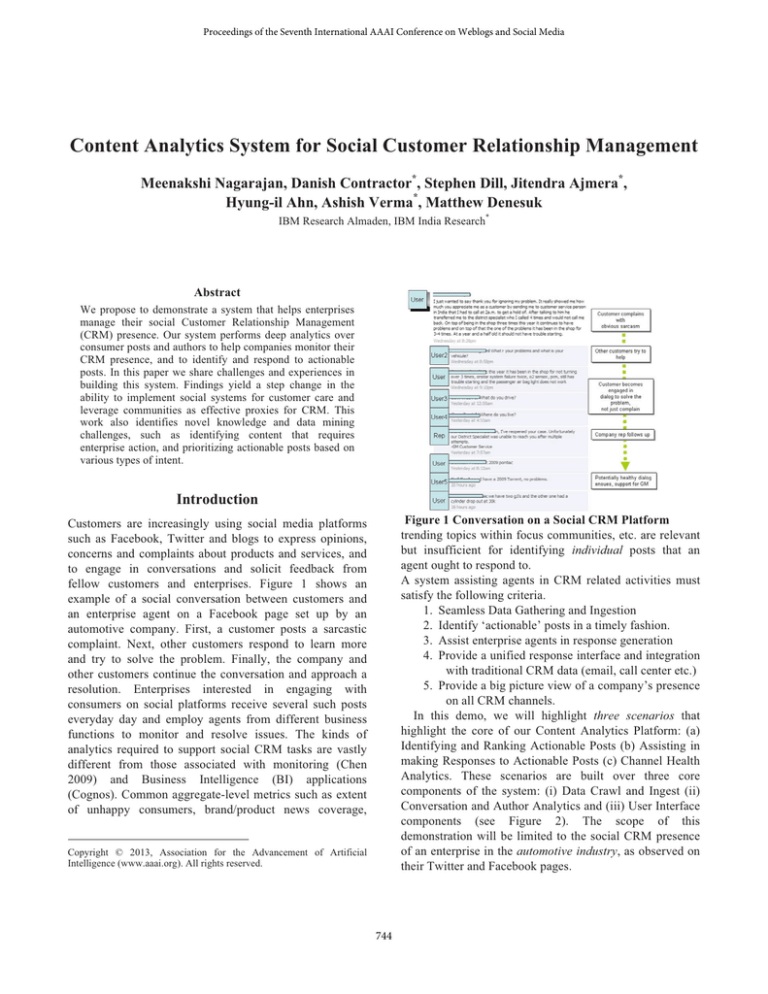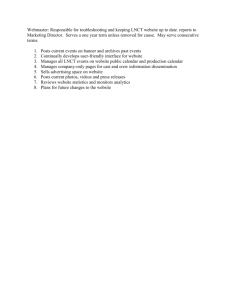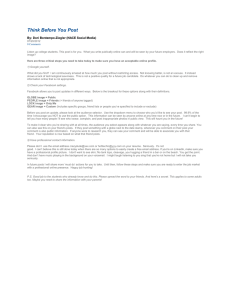
Proceedings of the Seventh International AAAI Conference on Weblogs and Social Media
Content Analytics System for Social Customer Relationship Management
Meenakshi Nagarajan, Danish Contractor*, Stephen Dill, Jitendra Ajmera*,
Hyung-il Ahn, Ashish Verma*, Matthew Denesuk
IBM Research Almaden, IBM India Research*
Abstract
We propose to demonstrate a system that helps enterprises
manage their social Customer Relationship Management
(CRM) presence. Our system performs deep analytics over
consumer posts and authors to help companies monitor their
CRM presence, and to identify and respond to actionable
posts. In this paper we share challenges and experiences in
building this system. Findings yield a step change in the
ability to implement social systems for customer care and
leverage communities as effective proxies for CRM. This
work also identifies novel knowledge and data mining
challenges, such as identifying content that requires
enterprise action, and prioritizing actionable posts based on
various types of intent.
Introduction
Figure 1 Conversation on a Social CRM Platform
trending topics within focus communities, etc. are relevant
but insufficient for identifying individual posts that an
agent ought to respond to.
A system assisting agents in CRM related activities must
satisfy the following criteria.
1. Seamless Data Gathering and Ingestion
2. Identify ‘actionable’ posts in a timely fashion.
3. Assist enterprise agents in response generation
4. Provide a unified response interface and integration
with traditional CRM data (email, call center etc.)
5. Provide a big picture view of a company’s presence
on all CRM channels.
In this demo, we will highlight three scenarios that
highlight the core of our Content Analytics Platform: (a)
Identifying and Ranking Actionable Posts (b) Assisting in
making Responses to Actionable Posts (c) Channel Health
Analytics. These scenarios are built over three core
components of the system: (i) Data Crawl and Ingest (ii)
Conversation and Author Analytics and (iii) User Interface
components (see Figure 2). The scope of this
demonstration will be limited to the social CRM presence
of an enterprise in the automotive industry, as observed on
their Twitter and Facebook pages.
Customers are increasingly using social media platforms
such as Facebook, Twitter and blogs to express opinions,
concerns and complaints about products and services, and
to engage in conversations and solicit feedback from
fellow customers and enterprises. Figure 1 shows an
example of a social conversation between customers and
an enterprise agent on a Facebook page set up by an
automotive company. First, a customer posts a sarcastic
complaint. Next, other customers respond to learn more
and try to solve the problem. Finally, the company and
other customers continue the conversation and approach a
resolution. Enterprises interested in engaging with
consumers on social platforms receive several such posts
everyday day and employ agents from different business
functions to monitor and resolve issues. The kinds of
analytics required to support social CRM tasks are vastly
different from those associated with monitoring (Chen
2009) and Business Intelligence (BI) applications
(Cognos). Common aggregate-level metrics such as extent
of unhappy consumers, brand/product news coverage,
Copyright © 2013, Association for the Advancement of Artificial
Intelligence (www.aaai.org). All rights reserved.
744
Figure 3 Snapshot of Ranked Posts and Metadata
TFIDF scores). Responses are presented to the agent to
select or edit as appropriate. In addition, the agent can
search the knowledge base using keywords to retrieve and
peruse through prior posts. Our interactions with industry
experts indicate that such a component is highly valuable
in saving an agent time and effort.
Figure 2 System Architecture and Components
Demo Scenarios
1. Identifying and Ranking Actionable Posts: For every
conversation thread or main post that appears on a
company’s page, our system address two main goals: (i) Is
this post or thread actionable, i.e. does it require a
response? If so, which company business function
(marketing, warranty, product related etc.) should respond
to this post? (ii) How should actionable posts be ranked or
prioritized in order to maximize agent productivity? Above
goals are realized using a topic categorizer, an intent
detection module and a ranking module (see Figure 2,3).
3. Channel Health Analytics: In addition to providing
post and thread level analytics, our system also aggregates
activity information to present in several dashboard views.
The goal is to be able to quickly spot areas of customer
dissatisfaction (e.g., significantly higher number of
complaints directed at the warranty business function),
identify problem areas specific to spatio-temporal
boundaries (e.g., Los Angeles dealerships have the most
complaints for the first week of February), most discussed
concepts, most active consumers on a channel etc. One
such dashboard that we would like to highlight in the demo
is the Channel Health Monitor. The motivation is to allow
enterprises to see how their presence can be summarized
across channels or data sources (Facebook, Twitter, Blogs,
enterprise managed forums etc.) and across business
functions or topics. We would like to show combinations
of channels, topics and categories to view summaries of the
kind of attention a company is receiving in terms of
metadata inferred by the system, such as complaints,
queries, sentiments and number of resolved issues.
The topic categorizer uses a combination of bottom-up
unsupervised clustering and top-down rule-based matching
techniques to identify the business function that is best
suited to respond to a post. The intent detection module
identifies if a post is a query, complaint, suggestion,
opinion or spam in order to deem actionability.
Additionally, this module also identifies if a post has
already been responded to or resolved, either by an agent
or a member of the community. The ranker module uses
timeliness of the post; severity and sentiment of a post such
as in a complaint or query; ‘temperament’ characteristics
of the author and other business function rules to rank
posts within a business function category.
A detail description of the system and algorithmic
components can be found in this work (Ajmera 2013).
The ‘actionability’ and ranking criteria are configurable
to meet changing business needs. For example, a business
may want to rank posts differently around the time of a
new product release vs. during normal business operation.
2. Assisting Response to Actionable Posts: In addition to
getting posts to an agent, our system also assists them in
constructing a response by showing previously resolved
issues that are contextually similar. The infrastructure to
support this process involves building a rich FAQ
repository of past customer-agent interactions comprising
of issues and resolutions. Analytics over a Solr-based
index are implemented to support the matching of new
incoming posts to issues in the repository. When similar
posts are retrieved, they are ranked based on their
similarity to the original post (e.g., content matching using
References
Chen, Ying; Proctor, Larry; Lelescu, Ana; Behal, Amit; He, Bin;
Griffin, Thomas D.; Liu, Anna; Wade, Bradford W.; Davis,
Trevor 2009. COBRA - mining web for COrporate Brand and
Reputation Analysis. Web Intelligence and Agent Sys.
Cognos. Cognos Business Intelligence and Financial Performance
Management, http://www-01.ibm.com/software/analytics/cognos/
Ajmera, Jitendra; Nagarajan, Meena; Ahn, Hyung-il; Verma,
Ashish; Contractor, Danish; Dill, Stephen. System for Social
CRM Analytics. World Wide Web Conferece, May 2013
745





